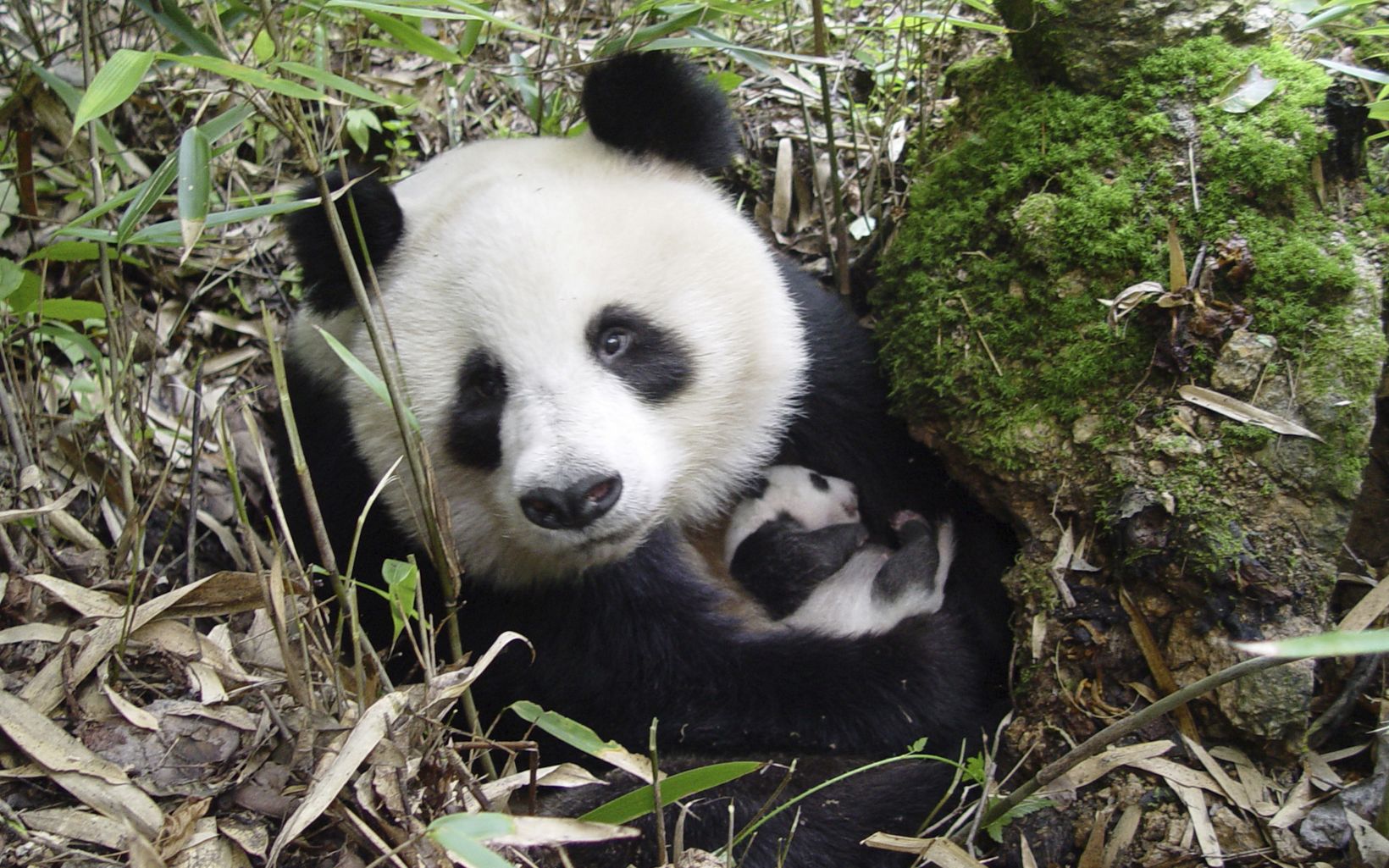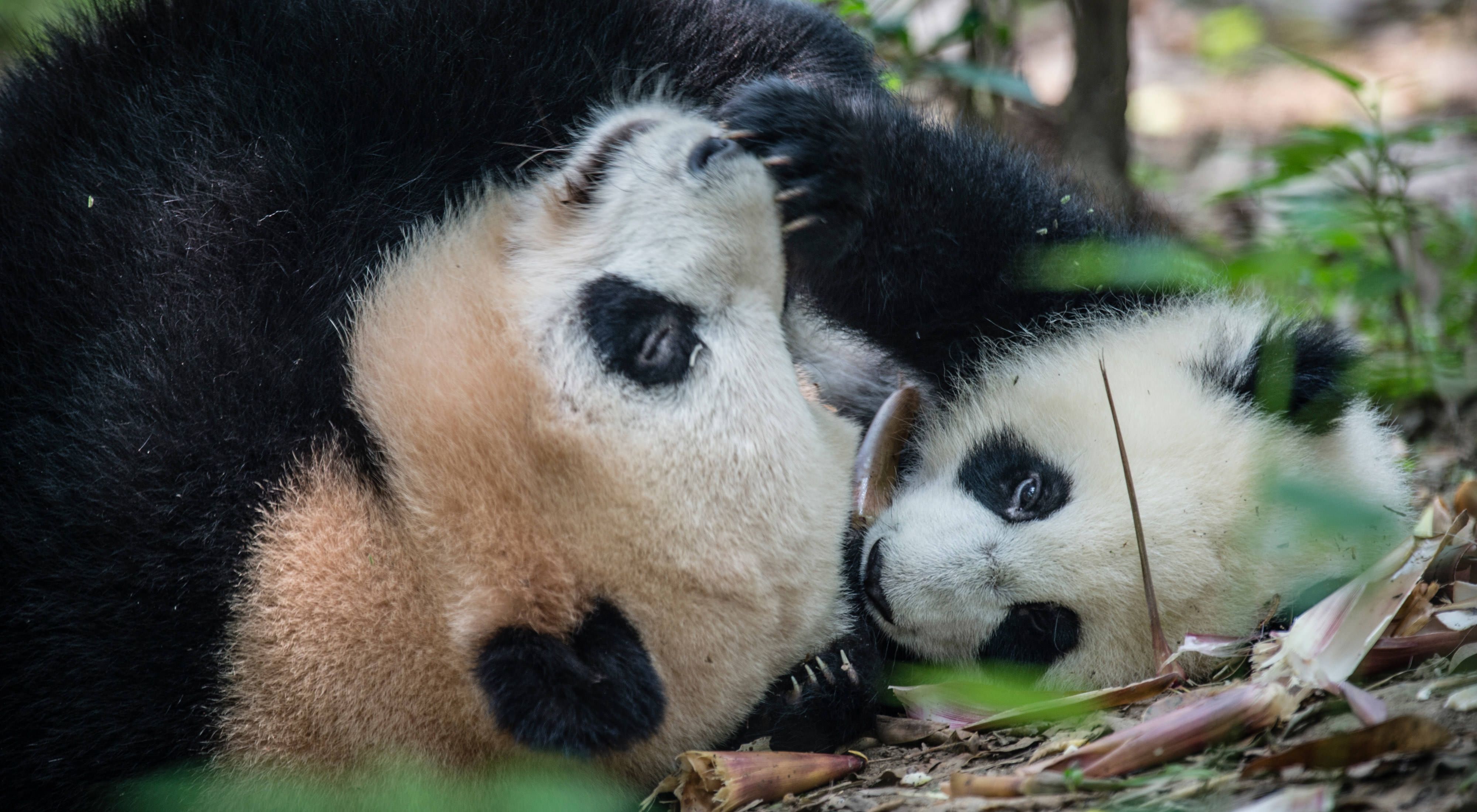Meet the Giant Panda
Depending mainly on a diet of bamboo, giant pandas live in western China. They eat dozens of pounds of bamboo per day over about 12 hours of feeding, which accounts for their incredible growth from less than a pound at birth to over 200 pounds at the age of maturity.
Pandas play an important role in the forest ecosystem where they live. Seeds and plant matter collects on their fur, which is then deposited as they move throughout their habitat. They also climb trees and swim, which further helps disperse the seeds.
Pandas are solitary creatures, but when females are ready to mate—starting at about eight years old—they use calls and scent to attract males. Pandas typically give birth to two cubs at a time, but usually only one cub will survive. Birth rates for pandas are very low, which combined with habitat loss and poaching make the species a special focus of conservationists.
Giant Panda Facts
- Diet: Giant pandas evolved to eat bamboo despite having a carnivore's digestive system.
- Adaptation: Giant pandas have "thumbs"—elongated wrist bones to grip bamboo.
- Weight: Giant pandas weigh only a few ounces at birth and grow to be more than 200 pounds.
- Ecology: Forests depend on Giant pandas for seed dispersal.
- Population: Giant panda numbers are increasing, suggesting that conservation is working.
Download
Want to learn more about giant pandas? Download this PDF to discover more interesting facts about these charismatic creatures!
DOWNLOADProtecting the Giant Panda
Only about 1,800 wild giant pandas now survive in the wild. A majority of these pandas live on a series of 62 reserves which, with help from The Nature Conservancy, China is attempting to weave together into a “Giant Panda National Park.”
The Chinese government has established more than 2,500 nature reserves throughout the country, but most aren’t well funded or actively managed. And, until recently, China’s strict landownership laws made it difficult for non-governmental organizations to play a significant role in land protection. But in 2008—while maintaining ownership of all land—the government opened the door for Chinese private entities to hold forestland use rights.
Now, The Nature Conservancy is testing a model that will enable Chinese land trusts to protect and sustainably manage China’s most important lands and waters, provide livelihood solutions for communities living near reserves and create a mechanism to finance long-term reserve management through private contributions.
Our goal is to create 10 land trust reserves together with our partners by the end of 2020. Over time, we aim to mobilize the private sector to protect China’s land through voluntary action.
TNC and others are also working to tie nearby villages into a sustainable economy so people won’t have to venture into the reserves to hunt, fish or gather resources. To start, TNC is helping jump-start a guesthouse and an agriculture program that connects farmers to high-end markets for sustainable food products. It has already generated $300,000 through catalog orders for things like honey, eggs, chickens, sausage and persimmons.
This is just one of many ways that TNC is working with people to protect wildlife.

.jpg?crop=0%2C81%2C4000%2C2500&wid=1640&hei=1025&scl=2.4390243902439024)



.jpg?crop=0%2C81%2C4000%2C2500&wid=1640&hei=1025&scl=2.4390243902439024)



